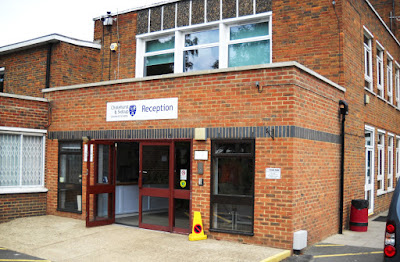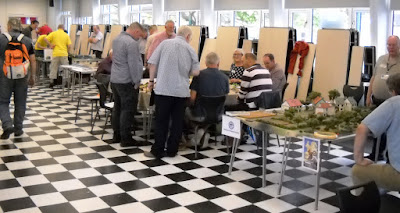Having already bought a copy of US STANDARD-TYPE BATTLESHIPS 1941-45 (2): TENNESSEE, COLORADO, AND UNBUILT CLASSES, it made sense to buy the Osprey Publishing book that covered the classes of battleship, the Nevada-class (USS Nevada and USS Oklahoma), the Pennsylvania-class (USS Pennsylvania and USS Arizona), and the New Mexico-class (USS New Mexico, USS Mississippi, and USS Idaho), that immediately preceded the Tennessee-class and Colorado-class battleships.
Unlike the Tennessee-class and Colorado-class battleships, which looked very similar in design, the Nevada-class, the Pennsylvania-class, and the New Mexico-class were less obviously related to each other, although the first two classes bore many similarities. They evolved at a time when the increasing power of modern battleship guns was such that only the thickest armour stood a chance of preventing a heavy shell penetrating a ship's armour and doing damage. As a result, these ships were armoured using the 'all-or-nothing' approach, where heavy armour was concentrated over the most vulnerable parts of the ship and the rest of the ship was left virtually unarmoured.
In terms of main armament, they all carried 14-inch guns, with the first class being armed with ten (two triple turrets and two twin turrets) and the other with twelve (four triple turrets). Secondary armament was originally carried armoured casemates that were situated below the main deck, but the number of guns was reduced and the remaining ones were re-sited in the mid-1920s in new unarmoured casemates at main deck height. This improved their ability to be used during heavy seas.
With the exception of the USS New Mexico, which trialled the turbo-electric propulsion system used in the later Tennessee-class and Colorado-class battleships, the ships were propelled by either steam turbines or triple-expansion reciprocating steam engines (the latter were fitted to the USS Oklahoma).
The New Mexico-class also had clipper rather than straight bows. This change of shape had been adopted in the hope that it would keep the fore end of the hull drier in heavy seas. It was subsequently used on the Tennessee-class and Colorado-class battleships.
When completed all seven ships were fitted with cage masts, but these were replaced when they were reconstructed. In the case of the Nevada and Pennsylvania-classes, heavy tripod masts were fitted in their place, with duplicate fire control positions atop each mast. The New Mexico-class were fitted with a large bridge structure forward somewhat akin to the bridge on the Royal Navy's HMS Nelson and HMS Rodney and a simple pole mast aft.
The USS Nevada, USS Oklahoma, USS Pennsylvania and USS Arizona were all in Pearl Harbour on 7th December 1941. The USS Oklahoma was hit by five torpedoes and sank, the USS Nevada was damaged and beached to prevent her sinking, the USS Pennsylvania was in dry dock and suffered superficial damage, and the USS Arizona was hit by several large bombs and sank with great loss of life. The USS Nevada and the USS Pennsylvania were subsequently repaired, rebuilt, and then took an active role in the war against Japan.
Because they were more modern, the New Mexico-class ships were based in the Atlantic in December 1941. Once the war began in the Pacific they were deployed there and like their near-sisters, they took an active part in the war against the Japanese.
The surviving ships were all placed in reserve soon after the end of the Second World War, and with the exception of the USS Mississippi they were all scrapped by the early 1950s. The USS USS Mississippi was used as a trials ship, and was equipped with a new and varied armament, including two RIM-2 Terrier surface-to-air missile launchers. She was finally scrapped in 1957.
The Nevada-class as built and as reconstructed
US STANDARD-TYPE BATTLESHIPS 1941-45 (1): NEVADA, PENNSYLVANIA, AND NEW MEXICO CLASSES was written by Mark Stille, illustrated by Paul Wright, and published in 2015 by Osprey Publishing (ISBN 978 1 4728 0696 3) as part of their New Vanguard series (No.220).
Unlike the Tennessee-class and Colorado-class battleships, which looked very similar in design, the Nevada-class, the Pennsylvania-class, and the New Mexico-class were less obviously related to each other, although the first two classes bore many similarities. They evolved at a time when the increasing power of modern battleship guns was such that only the thickest armour stood a chance of preventing a heavy shell penetrating a ship's armour and doing damage. As a result, these ships were armoured using the 'all-or-nothing' approach, where heavy armour was concentrated over the most vulnerable parts of the ship and the rest of the ship was left virtually unarmoured.
In terms of main armament, they all carried 14-inch guns, with the first class being armed with ten (two triple turrets and two twin turrets) and the other with twelve (four triple turrets). Secondary armament was originally carried armoured casemates that were situated below the main deck, but the number of guns was reduced and the remaining ones were re-sited in the mid-1920s in new unarmoured casemates at main deck height. This improved their ability to be used during heavy seas.
With the exception of the USS New Mexico, which trialled the turbo-electric propulsion system used in the later Tennessee-class and Colorado-class battleships, the ships were propelled by either steam turbines or triple-expansion reciprocating steam engines (the latter were fitted to the USS Oklahoma).
The New Mexico-class also had clipper rather than straight bows. This change of shape had been adopted in the hope that it would keep the fore end of the hull drier in heavy seas. It was subsequently used on the Tennessee-class and Colorado-class battleships.
When completed all seven ships were fitted with cage masts, but these were replaced when they were reconstructed. In the case of the Nevada and Pennsylvania-classes, heavy tripod masts were fitted in their place, with duplicate fire control positions atop each mast. The New Mexico-class were fitted with a large bridge structure forward somewhat akin to the bridge on the Royal Navy's HMS Nelson and HMS Rodney and a simple pole mast aft.
The USS Nevada, USS Oklahoma, USS Pennsylvania and USS Arizona were all in Pearl Harbour on 7th December 1941. The USS Oklahoma was hit by five torpedoes and sank, the USS Nevada was damaged and beached to prevent her sinking, the USS Pennsylvania was in dry dock and suffered superficial damage, and the USS Arizona was hit by several large bombs and sank with great loss of life. The USS Nevada and the USS Pennsylvania were subsequently repaired, rebuilt, and then took an active role in the war against Japan.
Because they were more modern, the New Mexico-class ships were based in the Atlantic in December 1941. Once the war began in the Pacific they were deployed there and like their near-sisters, they took an active part in the war against the Japanese.
The surviving ships were all placed in reserve soon after the end of the Second World War, and with the exception of the USS Mississippi they were all scrapped by the early 1950s. The USS USS Mississippi was used as a trials ship, and was equipped with a new and varied armament, including two RIM-2 Terrier surface-to-air missile launchers. She was finally scrapped in 1957.
The Nevada-class as built and as reconstructed
USS Oklahoma (1917)
USS Nevada (1927)
USS Oklahoma (1930s)
The Pennsylvania-class as built and as reconstructedUSS Nevada (1942)
USS Arizona (1918)
USS Arizona (1927)
USS Pennsylvania (1934)
The New Mexico-class as built and as reconstructedUSS Pennsylvania (1943)
USS New Mexico (1921)
USS Mississippi (1930s)
USS Idaho (1941)
USS Mississippi (1954)
US STANDARD-TYPE BATTLESHIPS 1941-45 (1): NEVADA, PENNSYLVANIA, AND NEW MEXICO CLASSES was written by Mark Stille, illustrated by Paul Wright, and published in 2015 by Osprey Publishing (ISBN 978 1 4728 0696 3) as part of their New Vanguard series (No.220).





































































.jpeg)
















